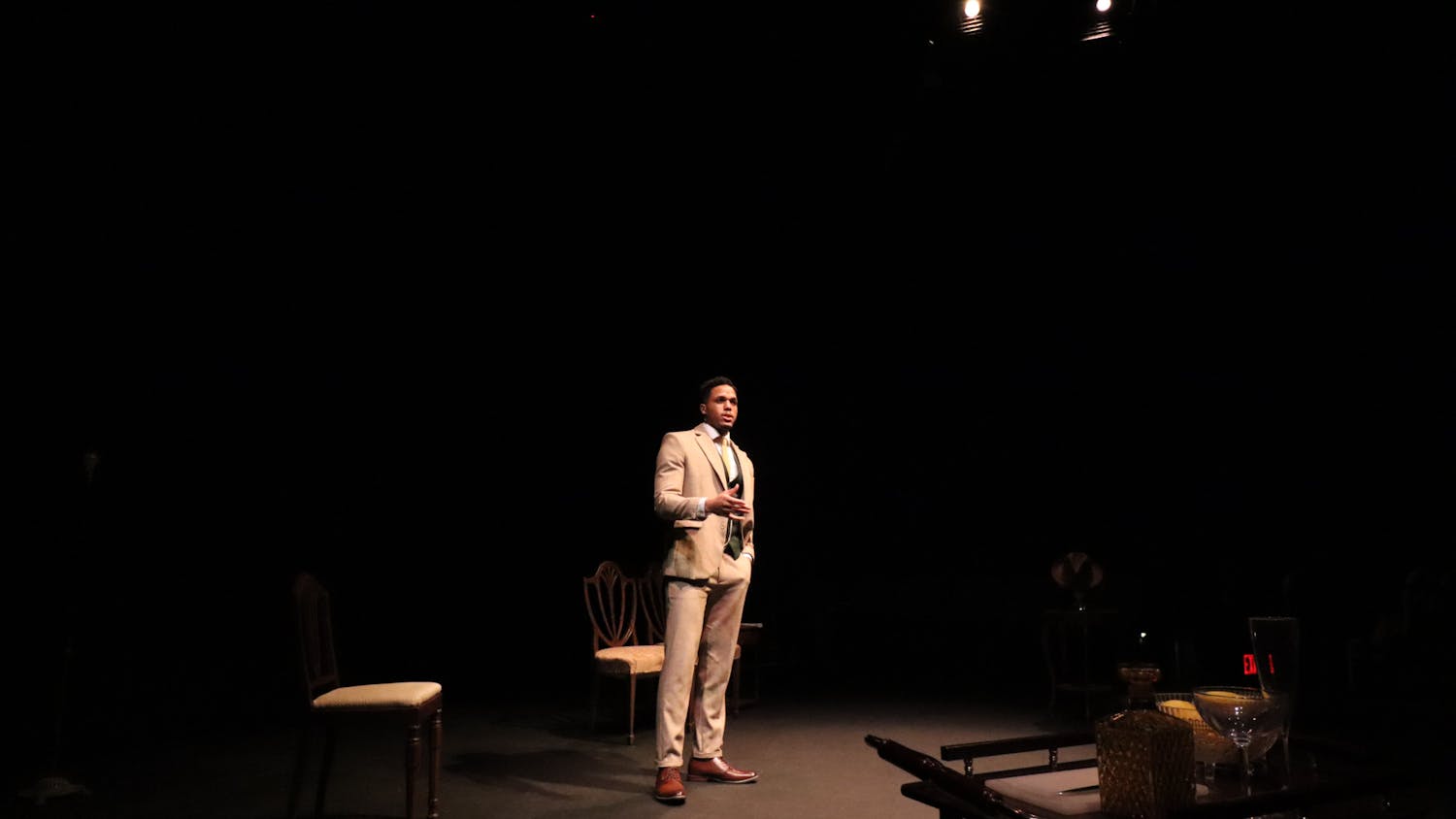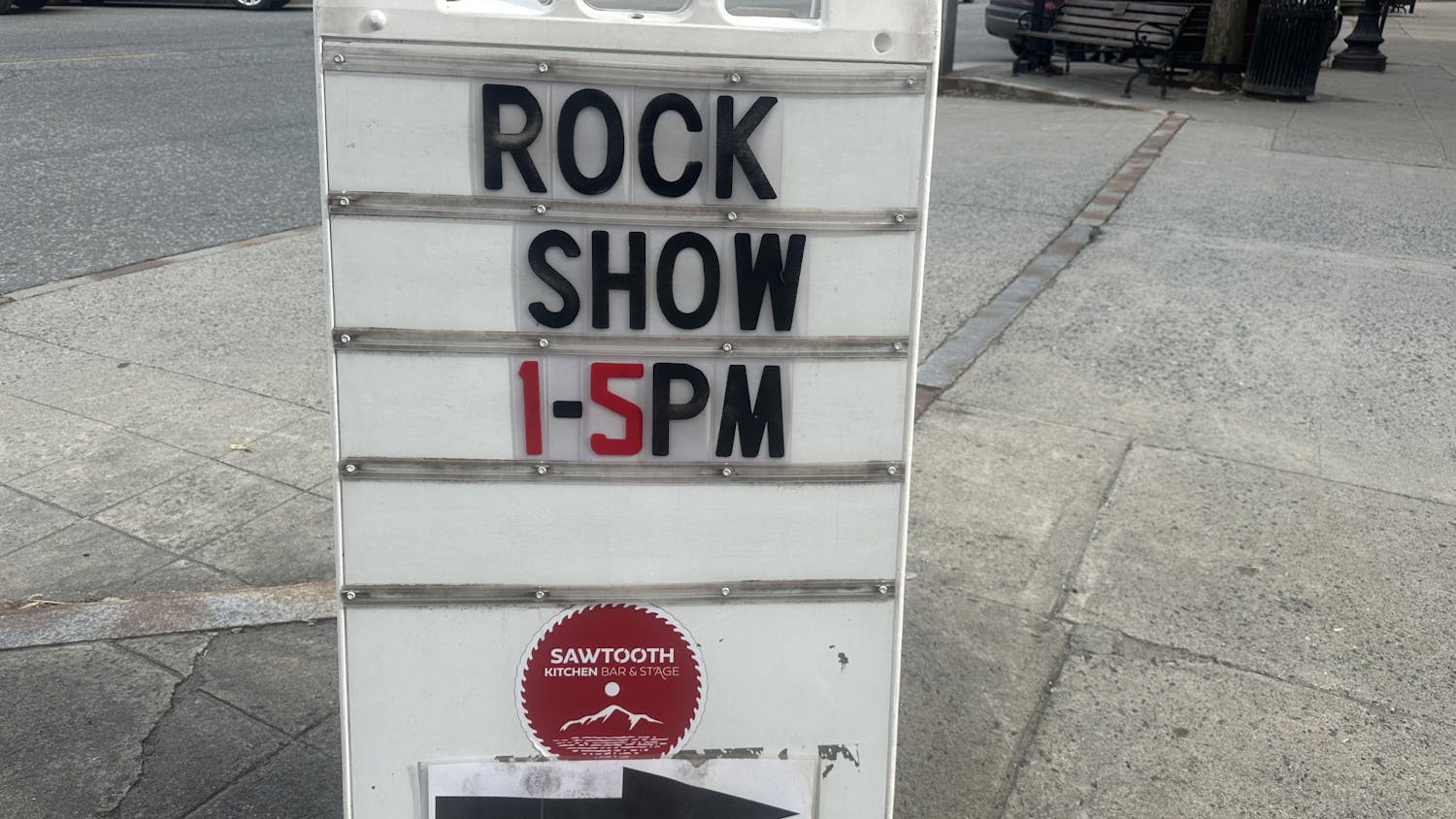Professor Wen Xing is the director of the Dartmouth Institute for Calligraphy and Manuscript Culture in China. He teaches calligraphy courses through the College’s Asian and Middle Eastern Languages and Literature department and offered a series of workshops last winter to teach students the fundamentals of calligraphy. He created a fractal calligraphy exhibition that integrated calligraphy with mathematics.
Can you explain the premise behind the fractal calligraphy exhibition?
WX: Fractal calligraphy is something based on fractal geometry and the tradition of Chinese calligraphy. It’s a new form of art, and I actually envisioned and invented it here. I introduced this in my class and found that many students were very interested in it, so eventually we came up with the exhibition. Basically, we create our traditional Chinese calligraphy first, then we feed it through a software. The software will generate a piece of fractal calligraphy that includes the original calligraphy repeated again and again. So if you zoom in, you will see all those tiny, tiny characters — that’s what fractal means.
What kind of responses did you get from this? Did it increase interest in calligraphy?
WX: People were interested in it because it’s a new form of art that also combines traditional calligraphy, so even people who do not understand fractal geometry or even Chinese calligraphy are also interested in it. Some of my calligraphy students had never studied Chinese calligraphy or the Chinese language before, but could still create it.
How did you come up with the idea?
WX: That’s very interesting. When I first saw the fractal geometry, I saw it as something very similar to Chinese cosmology. When you zoom in, you will see all of the tiny elements; it’s endless. That’s very similar to the Chinese yin and the yang.
How would you define the yin and yang?
WX: In Chinese cosmology, yin and the yang are the most fundamental energies in the universe. Chinese people believe that in the beginning of the whole universe, there was nothing. But then “somethings” develop and separate into two things — the yin and the yang. And this yin and yang begin to generate new sets of union and keep generating and generating. Then we have everything in the universe. The point is we can keep exchanging energies with each other, and we can achieve the balance. That’s how we understand the universe, that’s how we understand the human body and that’s how we understand the tradition of art.
So this surfaces in fractal calligraphy?
WX: Fractal geometry is where there are mathematical ideas and images very similar to the yin and the yang. That’s how I became interested in it. It’s related to a Chinese cosmology because we believe everything consists of the yin and the yang energy. There is also the yin and the yang inside the yin and the yang themselves; its kind of endless. Calligraphy’s the same thing. We use black ink on white rice paper. Black and white is the yin and the yang. And as soon as the brush touches the paper, we have one dot of black. And if you keep writing, then the yin and the yang keep generating and at some point, it reaches balance and we can finish the work. But we resume, and we can see endless erections of the yin and the yang in the energy. Just like the cosmos.
How did you get started in calligraphy?
WX: Calligraphy is part of Chinese culture. So, in China, we had a calligraphy class in primary school. When I grew up, I was very interested in it. I actually was an art history major. Later on, I became a scholar in traditional Chinese manuscripts—that’s my PhD.
Why do you think this is so important for students to learn?
WX: It’s very important because in modern society everything works with machines, so we don’t even need to write the characters. We just type them. It is slow to write with a brush or with a pen, but it is a very important mental exercise for us. Every time I begin to teach calligraphy, I will ask students one question, what is calligraphy? Many of them will say it is a form of art. That’s true, but traditional Chinese calligraphy is a cosmology; it is a philosophy. If you don’t understand that point, if you just think of writing characters in a beautiful way, that’s not traditional Chinese calligraphy. That is understanding of art, the universe and the human body. In Chinese culture, the human body consists of elements of the yin and the yang, so we are part of the universe. So I always say that calligraphy is a kind of meditation. Many of those traditional Chinese calligraphers and artists live a very long life. You not only learn something new or learn something old, but you are viewing our universe from a different perspective.
Do you think then calligraphy is declining with technology or will it always have a place?
WX: I think it will always have a place. My course has been very popular ever since I offered it, seven or eight years ago. It’s always fully enrolled with a long list, so that’s evidence. I have several students who have never studied the Chinese language before who still enjoy my class. And they are able to do a great job. Everyone’s an artist. Everyone is. You develop it in science; you develop it in technology. You forgot that you are an artist. We need it. We not only make ourselves healthier and more knowledgeable, but let ourselves enjoy life much more.
This interview has been edited and condensed for clarity and length.



